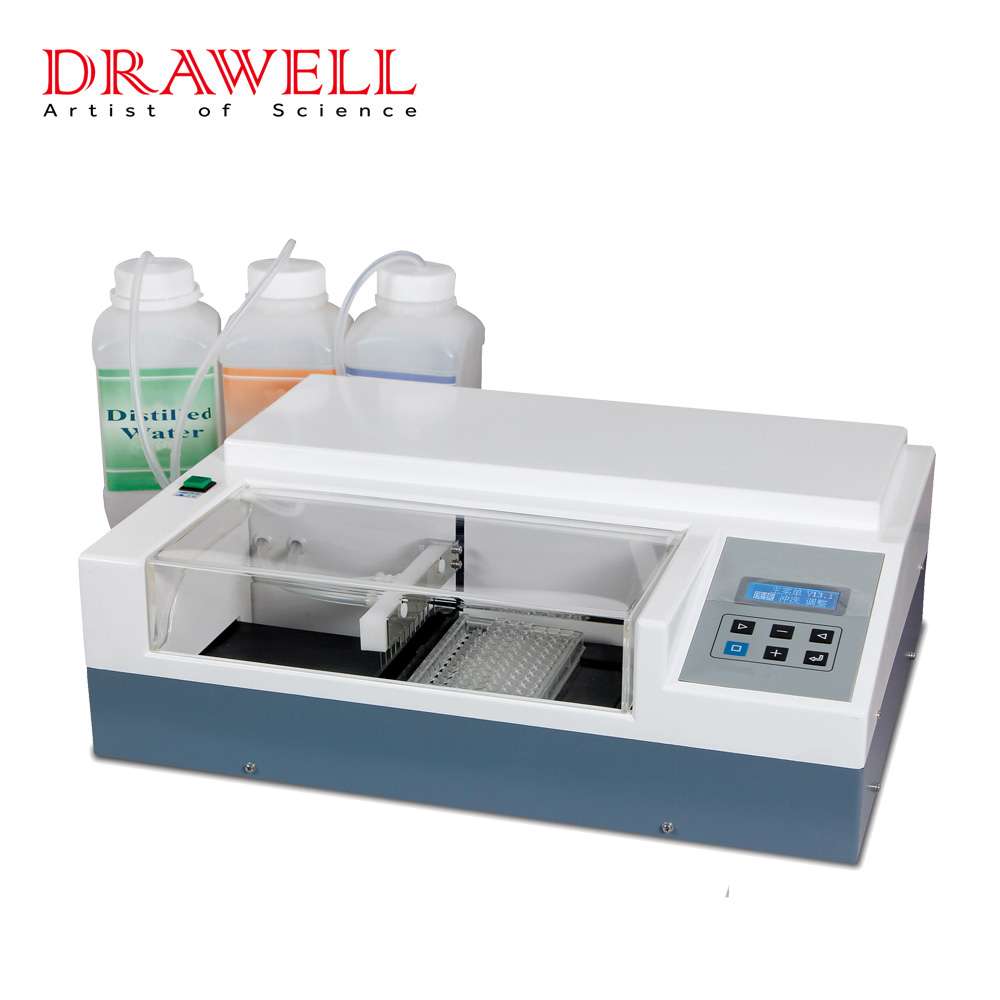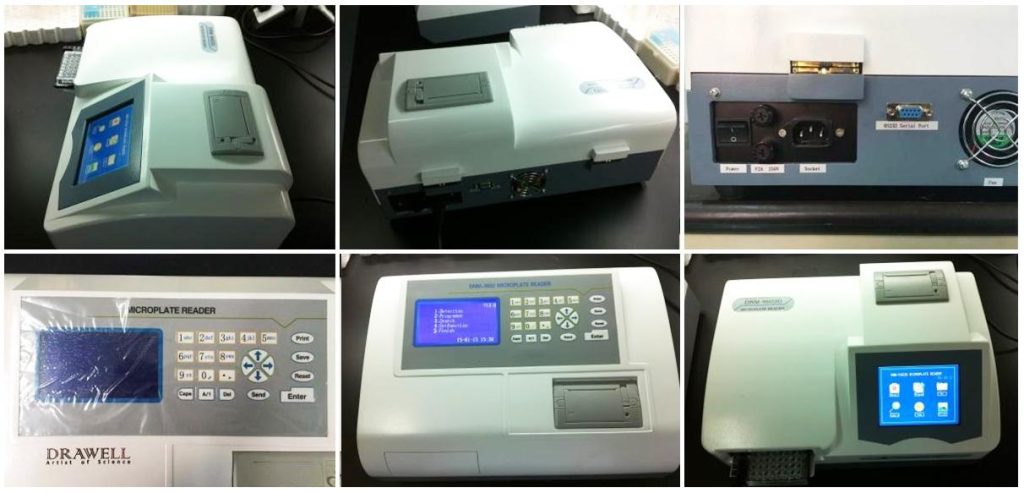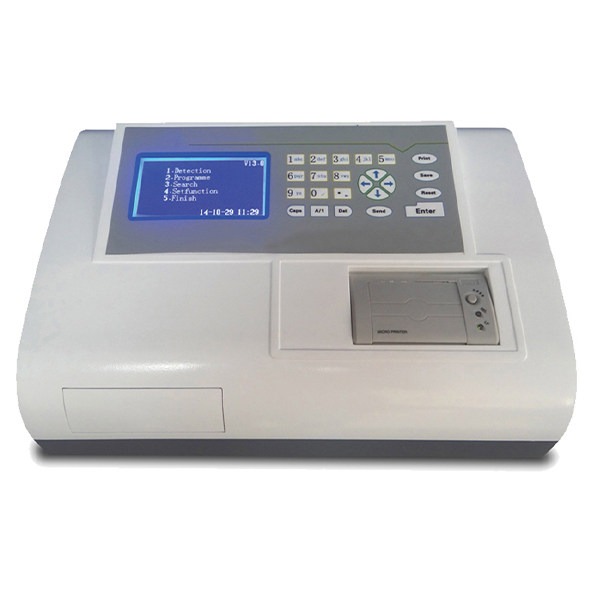Enzyme-Linked Immunosorbent Assay (ELISA) is a widely used technique in laboratories for detecting and quantifying substances such as proteins, antibodies, hormones, and other biomolecules. ELISA’s precision and reliability depend significantly on the equipment used—especially the ELISA reader and washer. These devices play a crucial role in ensuring accurate results and efficient workflows. In this article, we’ll guide you through the key factors to consider when selecting the right ELISA reader and washer for your lab, ensuring you can make an informed decision tailored to your needs.

Understanding the Role of ELISA Readers and Washers
While the ELISA reader is responsible for detecting and quantifying the presence of specific substances in the assay, the washer ensures that any unbound materials are thoroughly removed to minimize background noise and enhance result precision. Together, these tools enable laboratories to perform ELISA assays efficiently, producing high-quality, reproducible data. Before choosing the ELISA readers and washers, we need to know their functions and essential components. Then to choose the right one to satisfied your needs.
Principle and Components of ELISA Readers
An ELISA reader, often referred to as a microplate reader, is an essential tool for measuring the optical density (OD) or absorbance of the samples in an ELISA plate. The reader detects and quantifies the presence of target analytes by measuring the intensity of color change in the wells of the plate. Here’s how it works:
Principle: ELISA is based on the principle of antigen-antibody interactions. When a sample reacts with an enzyme-linked antigen or antibody, a detectable signal, often colorimetric, is produced. The ELISA reader measures this signal, typically in absorbance or fluorescence units, to determine the concentration of the target substance.
The reader typically consists of the following components:
- Light source: Generates light of a specific wavelength, such as a tungsten halogen lamp or LED.
- Monochromator: Selects the desired wavelength of light.
- Microplate holder: Holds the microplate containing the ELISA samples.
- Detector: Measures the light intensity transmitted or emitted by the samples.
- Display and data analysis software: Displays the measurement results and provides tools for data analysis.
Advanced readers may also have fluorescence and luminescence detection capabilities, enabling multiplex assays. The choice of ELISA reader depends on the type of ELISA being performed and the desired sensitivity and specificity. For example, a fluorescence plate reader is suitable for ELISAs that use fluorescent substrates, while a luminescence plate reader is used for ELISAs that generate luminescent signals.

Function of an ELISA Washer
The ELISA washer complements the reader by ensuring clean, accurate assay results. ELISA washers’ primary function is to wash away unbound materials and reagents from the microplate wells, which minimizes background noise and prevents false readings.
ELISA washers can be manual, semi-automated, or fully automated. It comes with various wash heads designed to fit different plate formats (e.g., 96-well, 384-well). Key features include adjustable washing parameters like volume, speed, and cycles, which allow precise control to match the assay’s needs.
The performance of an ELISA washer is influenced by factors such as washing efficiency, precision, and compatibility with different microplate formats. A high-quality washer can significantly improve the reproducibility and accuracy of ELISA results.
Factors to Consider When Choosing an ELISA Reader and Washer
Choosing the right ELISA reader and washer depends on your lab’s specific needs and the type of assays you perform. Below are the key factors to consider for each device:
ELISA Reader
Detection Modes: ELISA readers come with different detection modes such as absorbance, fluorescence, and luminescence. If your lab performs a wide variety of assays, a multi-mode reader might be a better choice, as it provides greater flexibility in terms of assay design and application.
Sensitivity and Accuracy: High sensitivity is essential for detecting low concentrations of analytes. Consider readers with a wide dynamic range and low detection limits, especially if you deal with small sample volumes or require high precision in quantification.
Throughput and Speed: Depending on your lab’s workload, the number of samples you handle, and the assay’s complexity, throughput is a key factor. Some ELISA readers can handle multiple plates simultaneously or read large-format plates (e.g., 384-well) quickly. This can help you optimize workflow efficiency, particularly in high-throughput labs.
Data Analysis Software: User-friendly, robust software is vital for analyzing results. Look for ELISA readers that come with software offering advanced features like curve-fitting, statistical analysis, and customizable reporting formats. The ability to integrate with existing laboratory information systems (LIS) is also a plus.
Compatibility with Assay Types: Different types of ELISA assays (direct, indirect, sandwich, competitive) may have specific requirements in terms of detection range and sensitivity. Ensure that the ELISA reader you choose is versatile enough to accommodate the range of assays you perform.

ELISA Washer
Number of Wash Heads and Channels: Choose a washer that fits your plate format, whether it’s 96-well, 384-well, or another type. Some washers come with interchangeable wash heads for greater flexibility. If you perform different assays with varying plate formats, this feature will be beneficial.
Washing Efficiency and Precision: Ensure that the washer provides customizable settings for wash cycles, volume, and pressure. Too little washing may leave unbound substances, while too much can strip bound materials, both of which can lead to inaccurate results. Precision control helps you optimize washing for specific assay requirements.
Prevention of Cross-Contamination: To avoid contamination between wells, choose washers with systems that minimize the risk of liquid carryover. Some models have separate fluid pathways for each well or advanced fluid handling technologies that reduce the chances of cross-contamination.
User Interface and Protocol Customization: Look for washers with intuitive, programmable interfaces that allow you to save and modify washing protocols easily. This can save time when switching between different assays and ensure consistency across experiments.
Selecting the right ELISA reader and washer for your lab is crucial for ensuring accuracy, reliability, and efficiency in your ELISA assays. ELISA readers provide the necessary sensitivity and precision to quantify target substances, while washers ensure proper removal of unbound materials for cleaner, more accurate results. When making your choice, consider factors such as detection modes, sensitivity, throughput, wash head compatibility, and customization options to meet the specific needs of your lab.

